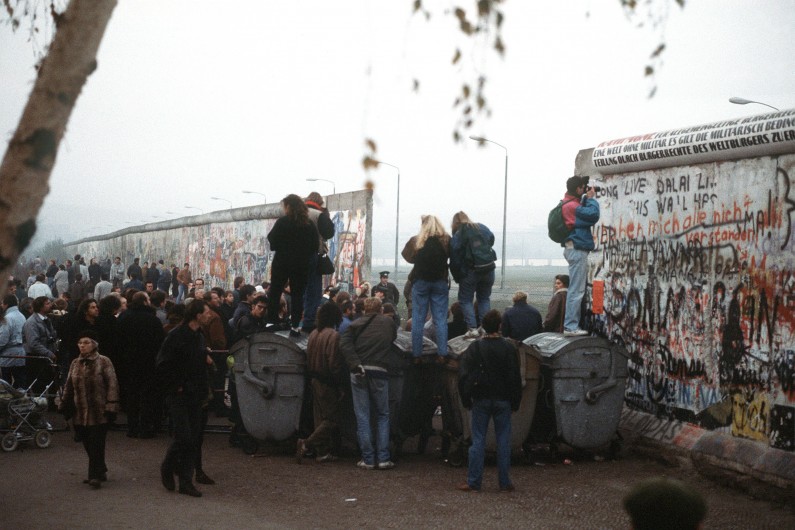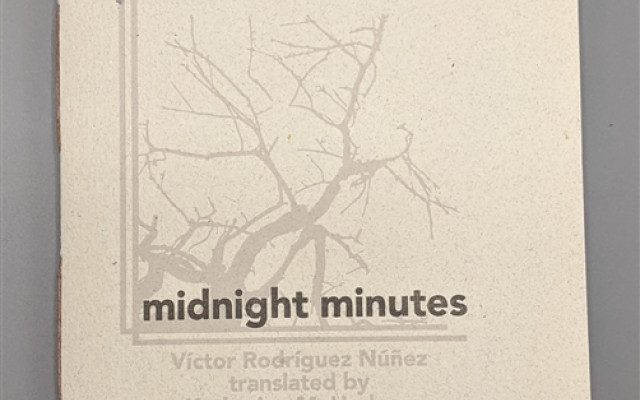Recommendations for the 30th Anniversary of the Fall of the Berlin Wall

This past November marked the 30th anniversary of the fall of the Berlin Wall. As 2019 draws to a close, we face a new decade that will force nations and their citizens to continue to confront notions of boundaries, of self and other, head-on; it will require the tearing down of more walls. As translators, we’re already uniquely attuned to the significance and consequences of moving between linguistic and cultural boundaries. We thought, though, that we might invite you to take a more focused look at Germany’s example in 1989. Below, you’ll find a short selection of recommendations. We hope you enjoy.
What Remains (Was Bleibt) comes from one of the most well-known writers from behind the wall, Christa Wolf. The English language translation appears together with other collected short stories in What Remains and Other Stories, translated by Heike Schwarzbauer and Rick Takvorian and published in 1995. Written in 1979, but not published until the fall of the wall in 1990, this novella follows one woman, a writer, under Stasi surveillance, delving into the impact this has on her psychologically.
The movie The Lives of Others (2006) is a drama by Florian Henckel von Donnersmarck that highlights the cultural and political tensions of living in the GDR in the 1980’s. The main protagonist, Gerd Wiesler, works as a Stasi officer who believes in the SED system and works as an informant; some of his duties include spying on the author and playwright Georg Dreyman. But after reading Bertolt Brecht’s Memory of Marie A. and listening to "A Sonata for a Good Man" while spying on Dreyman, Wiesler embarks on his own journey of self-interrogation. The movie is a drama and therefore features heavy plot twists, which shift the audience’s perspective from observed to the observer, as well as illuminate the power structures facilitating a totalitarian system like the GDR. Lisa highly recommends this to a non-German audience because of its ability to capture the fear, hope and anger of a people opposed to a system which needed walls to capture people physically as well as mentally.
Johannes R. Becher (1891-1958) was a German poet, novelist and essayist. He was an Expressionist and pacifist, an enemy of the Third Reich and pioneer for cultural renewal in the young German socialist state. Shocked by the outbreak of the war in 1914 and by the deaths of many of his contemporaries, his poetry became more extreme in its images, his syntax more radical, and his works—such as An Europa (1916), Päan gegen die Zeit (1918), and Verbrüderung (1916)—became manifestos for revolution and cultural mayhem. During the early 1920s Becher involved himself in Communist Party of Germany (KPD) activities and began to study Marxism. His new poetry, such as Maschinenrhythmen (1929), Der Leichnam auf dem Thron (1925) or Dem Ewiglebenden — auf Stalins Tod (1953) combined his old Expressionist imagery with his new Communist beliefs and marked him as an emerging Communist poet. He founded the Kulturbund in 1945 for the restoration of German culture after World War II and helped to found the journal Aufbau and Sinn und Form. Together with Hanns Eisler he wrote the national anthem for the new German Democratic Republic. In 1953 he became the GDR’s first culture minister. After his death, he became an icon of the state and the poet of the socialist nation.
Hitchhiking: Twelve German Tales is our last recommendation, a collection of short prose by Gabriele Eckart and translated by Wayne Kvam published in English in 1992. The stories, often narrated by women, depict an almost melancholic mundanity of the everyday: the frustrations of a young woman working on a construction crew, for example, or a retired couple facing the loss of their summer home outside Berlin. These stories were written in the last decade of the GDR, and capture the disillusionment characteristic of the period, along with a governmental system increasingly at odds with its citizens’ reality.
Image: West German citizens gather at a newly created opening in the Berlin Wall at Potsdamer Platz in November 1989. Dod photo


